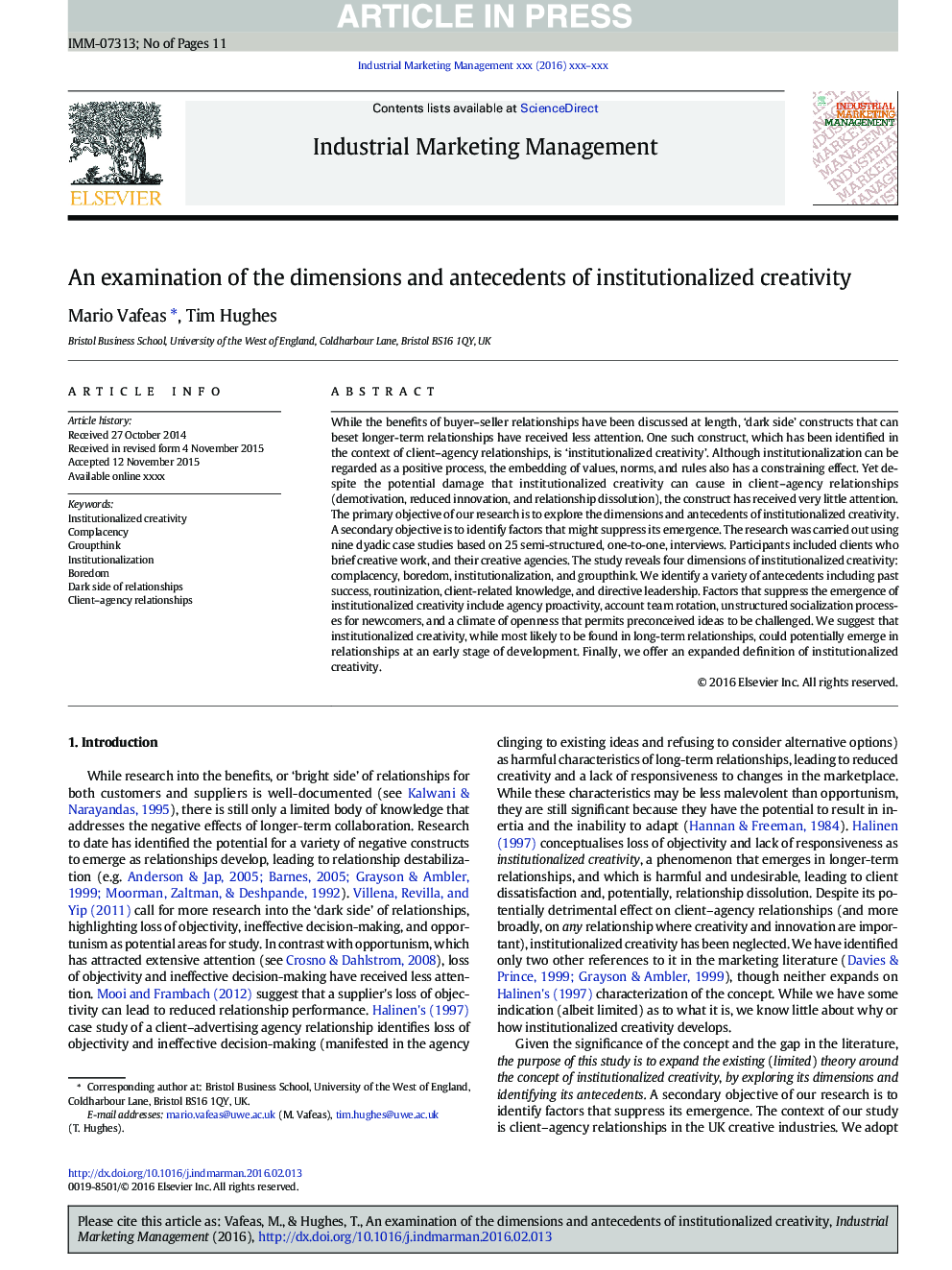| Article ID | Journal | Published Year | Pages | File Type |
|---|---|---|---|---|
| 7432479 | Industrial Marketing Management | 2016 | 11 Pages |
Abstract
While the benefits of buyer-seller relationships have been discussed at length, 'dark side' constructs that can beset longer-term relationships have received less attention. One such construct, which has been identified in the context of client-agency relationships, is 'institutionalized creativity'. Although institutionalization can be regarded as a positive process, the embedding of values, norms, and rules also has a constraining effect. Yet despite the potential damage that institutionalized creativity can cause in client-agency relationships (demotivation, reduced innovation, and relationship dissolution), the construct has received very little attention. The primary objective of our research is to explore the dimensions and antecedents of institutionalized creativity. A secondary objective is to identify factors that might suppress its emergence. The research was carried out using nine dyadic case studies based on 25 semi-structured, one-to-one, interviews. Participants included clients who brief creative work, and their creative agencies. The study reveals four dimensions of institutionalized creativity: complacency, boredom, institutionalization, and groupthink. We identify a variety of antecedents including past success, routinization, client-related knowledge, and directive leadership. Factors that suppress the emergence of institutionalized creativity include agency proactivity, account team rotation, unstructured socialization processes for newcomers, and a climate of openness that permits preconceived ideas to be challenged. We suggest that institutionalized creativity, while most likely to be found in long-term relationships, could potentially emerge in relationships at an early stage of development. Finally, we offer an expanded definition of institutionalized creativity.
Related Topics
Social Sciences and Humanities
Business, Management and Accounting
Marketing
Authors
Mario Vafeas, Tim Hughes,
